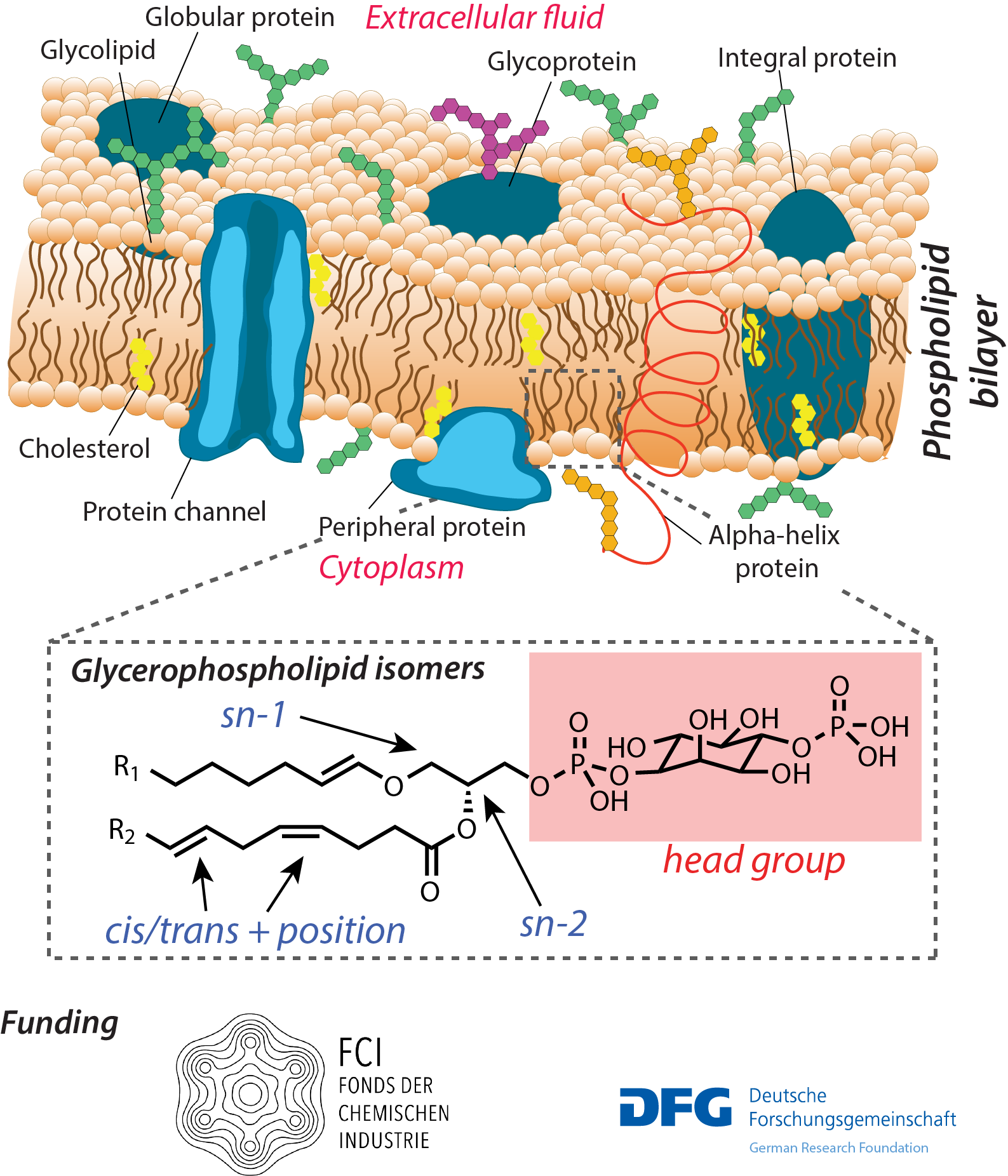UVPD-MS and MSI
Structure Sensitive Ultraviolet Photodissociation Mass Spectrometry and Mass Spectrometry Imaging
Cell membrane lipids and the corresponding metabolites are of utmost importance for a plethora of biological processes. They are involved in inter- and intracellular signaling cascades and determine the physical properties of the cell membrane. Specific lipids can be linked to diseases such as diabetes or cancer. Despite the importance of lipids for biology, medicine and biochemistry no available method enables to probe specific structural motifs of lipids and their location in complex biological samples.

Ultraviolet photodissociation mass spectrometry (UVPD-MS)

We develop instrumental analytical-chemical methods that allow to selectively cleave specific bonds of lipids by using UV photons and to detect the corresponding fragments by means of mass spectrometry. Among the most important aspects of the project are the investigation of the physico-chemical fundamentals of the UV-induced photodissociation, the development of suitable instrumentation (ion sources, mass spectrometers, laser setup) as well as software tools. In addition, the investigations intend to improve the sensitivity and selectivity of UVPD by optimizing the experimental conditions and corresponding chemical reactions.
For other biomolecules, such as peptides and proteins, we use UVPD-MS to maximize sequence coverage but also to investigate experimental and intrinsic factors influencing tandem MS results. For instance, charge state and gas-phase confirmation can influence fragmentation efficiency or fragment ion identity. We aim to rationalize these factors for future applications in bioanalytics.
Mass spectrometry imaging with isomer resolution

The structure and identity of metabolites can differ between tissue regions, cell types and can be affected by infection or disease. Currently, deciphering lateral distributions of isomeric metabolites is challenging. This has hindered investigations that aim to rationalize underlying biochemical events that lead to organizational preferences of metabolite isomers in distinct tissue regions. For this purpose, we develop bioanalytic methods employing mass spectrometry imaging (MSI) tools that are capable to localize and differentiate metabolite isomers. The main MSI modalities used in our studies are matrix-assisted laser desorption/ionization (MALDI) and desorption electrospray ionization (DESI). With these methods in hand we study complex tissue samples from veterinary medicine, parasitology and biology collaborators in order to unveil structural changes of metabolites and decode processes during infection and disease leading to metabolite structure alterations.
Contact:
